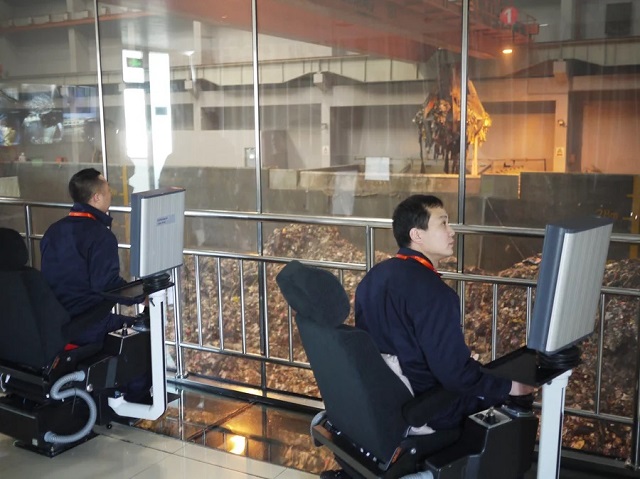Time to rethink waste management
In the past four years, China has significantly transformed its textile waste management strategies, primarily by introducing mandatory waste sorting regulations in Shanghai. This policy shift has had unforeseen outcomes within the textile waste processing industry and has resulted in a nationwide overhaul of waste management practices.
China’s ambitious approach, which includes mandatory textile waste sorting and an increase in waste-to-power incineration capacity, has brought about substantial changes in its textile waste management landscape. These policies not only have an impact on population behavior but have also unveiled unexpected challenges in managing waste in the world’s one of the most populous nations.
The advent of mandatory waste sorting
Shanghai led the way four years ago by introducing mandatory textile waste sorting regulations, marking a pioneering step in waste management. These regulations aimed to revolutionize how Chinese residents managed waste and quickly expanded to include most major cities in the country, setting the stage for a significant shift in waste management practices.
Unintended outcome of waste-to-power incineration
While the mandatory waste sorting policy promised to enhance recycling rates and reduce the volume of waste sent for incineration, its implementation resulted in unforeseen challenges for the waste-to-power incineration sector. The reduction in waste available for incineration created an overcapacity crisis, leading to the idling of some incineration facilities. For example, in May, the Wuhu Ecology Center’s data revealed a staggering 8,499 “planned stoppages” during that month, indicating that some incinerators were underutilized. While several factors contribute to these stoppages, the primary issue is the reduced availability of waste for incineration due to successful waste sorting policies.
Government policy coordination challenges
The clash between government policies has compounded the challenges of textile waste management. Effective waste sorting policies have found themselves at odds with concurrent policies like the “zero-waste city” initiative. Achieving better policy coordination across ministries and regions becomes paramount to harmonizing these seemingly contradictory directives.
Impact on incineration rates
The data from Shanghai serves as an illuminating case study, showcasing the tangible impact of mandatory waste sorting. For instance, in 2021, the city witnessed a notable uptick in the recovery of recyclables and wet waste, translating into reduced incineration rates. This shift had a profound impact on incinerators, which, prior to the sorting policy, were operating at or beyond their full capacity. Consequently, after the policy’s implementation, incinerators faced fuel shortages and, at times, were forced to shut down. By 2021, Shanghai had the capacity to burn 7.65 million tons of waste per year but only managed to incinerate 6.652 million tons, leading to high rates of stoppage and overcapacity.
Overcapacity predicament
China’s unbridled enthusiasm for achieving incineration targets, as seen in the 12th and 14th Five-Year Plans, has contributed significantly to the overcapacity crisis. Multiple factors, including overestimations, aggressive private investments, data manipulation by local governments, and a lack of interregional resource sharing, have fueled the problem. The report details a study by the Wuhu Ecology Center that assesses overcapacity figures across province-level administrations, uncovering a disconcerting national overcapacity figure for 2022.
Environmental and health risks
The accelerated growth of incineration facilities in China has raised concerns regarding environmental and health risks. A dearth of government subsidies since 2020 has exacerbated the financial challenges faced by these plants. Recent studies have highlighted health risks associated with waste-to-energy facilities, calling for the expansion of buffer zones to mitigate these hazards.
| Unintended outcomes | Challenge for waste-to-power incineration. Overcapacity crisis due to reduced waste. |
| Government policy | Coordination Clash between waste sorting and other policies. Need for better policy coordination. |
| Impact on incineration rates | Reduced incineration rates due to waste sorting. Incinerators facing fuel shortages and shutdowns. |
| Overcapacity predicament | Overestimations and aggressive investments. National overcapacity issue in 2022. |
| Environmental and health risks | Concerns about environmental and health risks. Lack of subsidies for waste-to-power plants. |
| Carbon emissions | High carbon emissions from waste incineration. Environmental impact and sustainability concerns. |
| The way forward | Balancing waste reduction with disposal. Prioritizing policy coordination and sustainability. Adapting and innovating for sustainable waste management. |
Carbon emissions and environmental impact
The environmental repercussions of incineration extend to carbon emissions. Waste-to-power plants have become notable emitters of carbon dioxide equivalent, raising questions about their sustainability within the broader context of China’s environmental goals. For example, data from the Ministry of Ecology and Environment indicates that China’s waste incineration power generation emitted approximately 100.65 million tons of carbon dioxide equivalent in 2022. This report elaborates on the magnitude of emissions and their environmental consequences.
China’s journey toward mandatory waste sorting and the expansion of incineration capacity has given rise to complex challenges and unforeseen consequences. Balancing the goals of waste reduction and resource recovery with the practicalities of waste disposal presents a formidable task. To navigate these challenges successfully, China must prioritize careful policy coordination, a clear vision for sustainable waste management, and the proactive resolution of policy contradictions. Only through such efforts can China ensure that its waste management practices align with its broader environmental objectives while addressing the immediate needs of its growing population and urban areas. The path forward will require adaptability, innovation, and a commitment to sustainable waste management practices across the nation.
